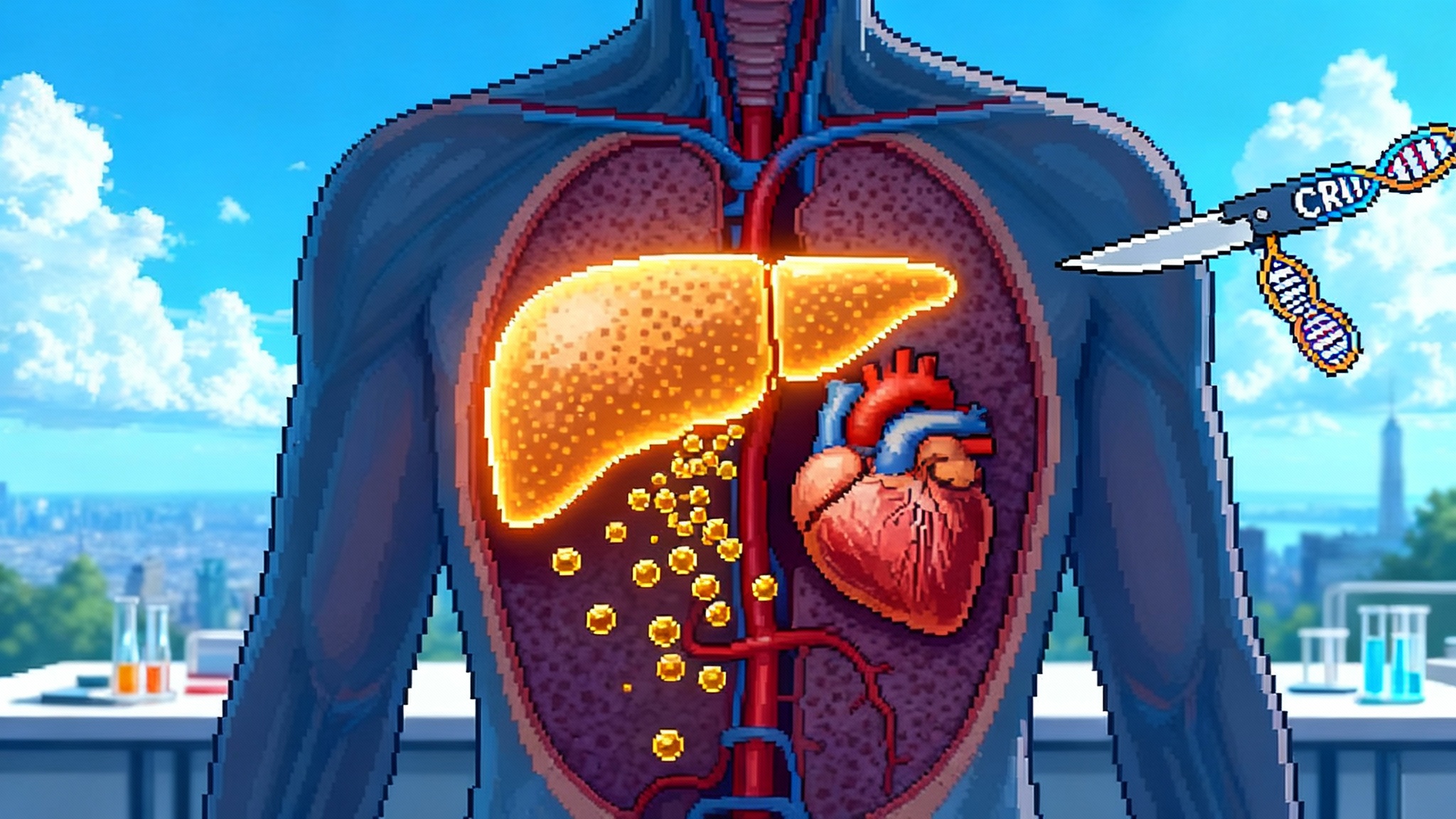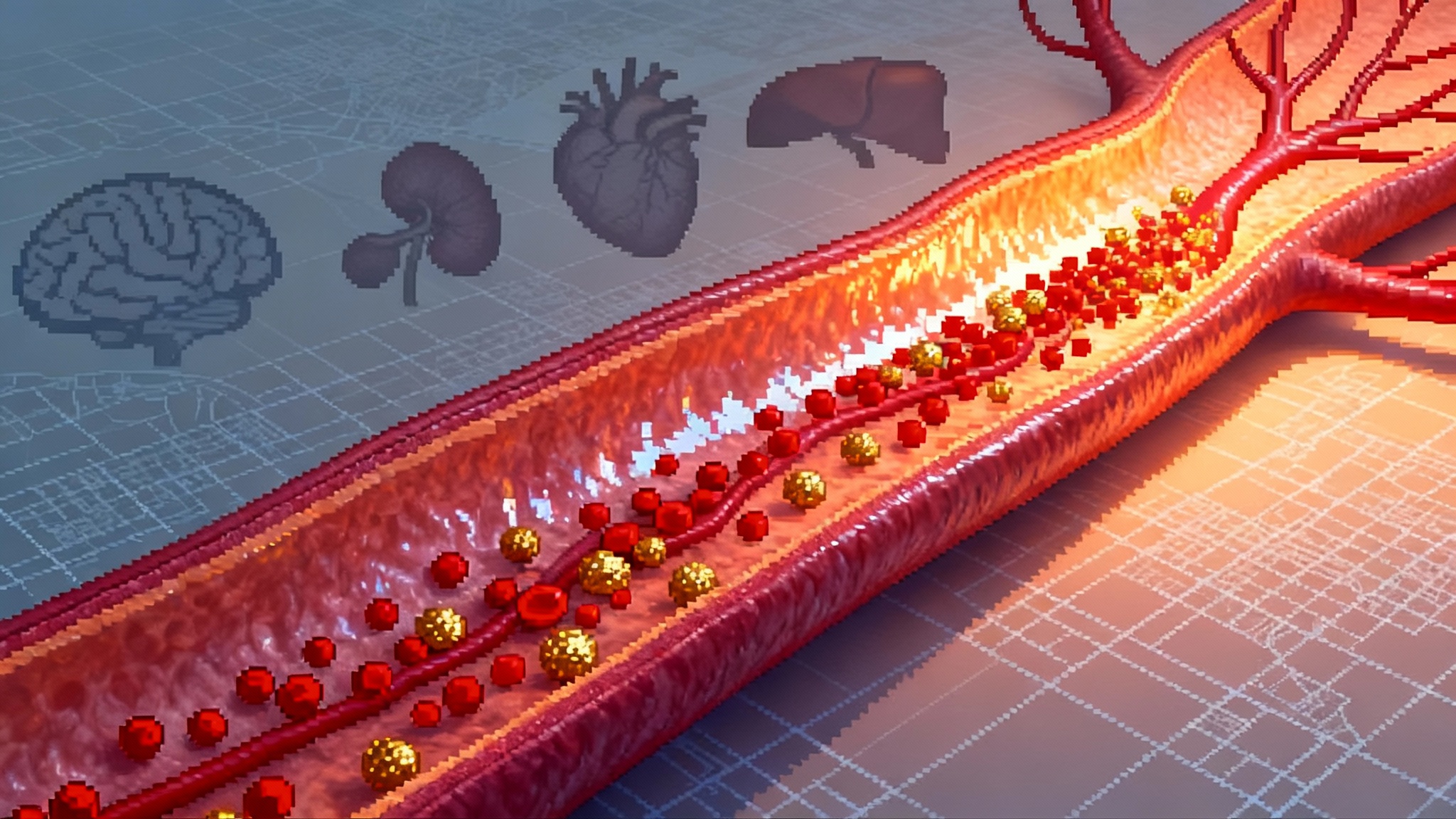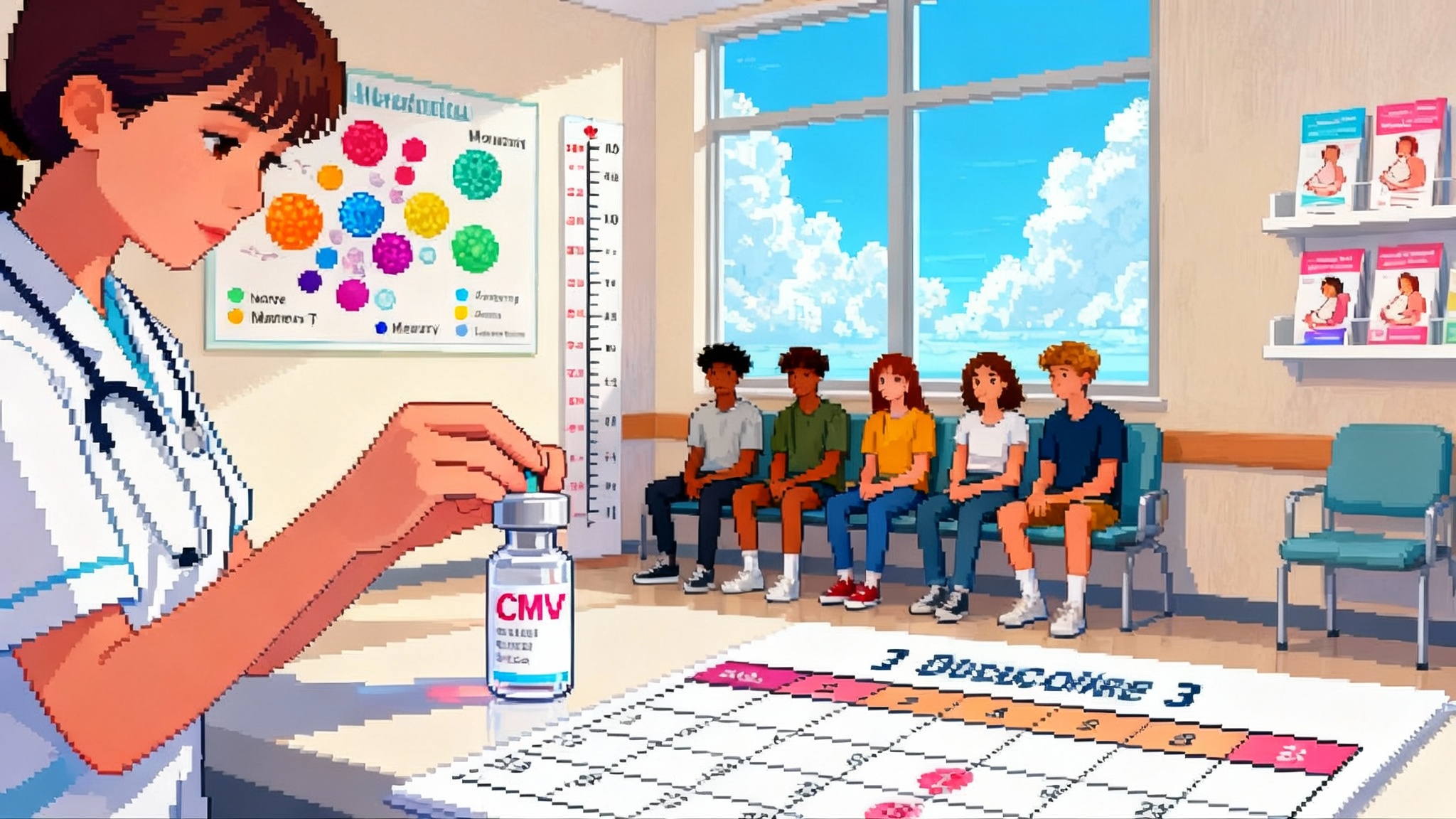Epigenome Editing Enters Humans, Longevity’s Next Switch
Between January and April 2025, epigenome editing crossed into human trials. Tune Therapeutics secured approvals in Hong Kong and New Zealand and raised $175 million to launch TUNE-401 for chronic hepatitis B. Here is why this pivot could reshape prevention-first longevity.
A quiet breakthrough enters the clinic
The first quarter of 2025 gave medicine a new tool that works more like a dimmer switch than a wire cutter. On January 7, 2025, Tune Therapeutics announced it had received approval to start a Phase 1b clinical trial in Hong Kong for TUNE‑401, with a parallel study in Auckland, New Zealand, positioning the program as the first in vivo epigenome editor to reach human testing for chronic hepatitis B. The company also disclosed that its approach aims to silence both integrated hepatitis B DNA and covalently closed circular DNA, the stubborn viral reservoir that sustains infection. This was not just another trial approval; it was the clinical debut of programmable and potentially reversible gene silencing in humans. Tune’s Hong Kong approval announcement captured the pivot point.
Within days of that regulatory milestone, the financing inflection arrived. Tune closed more than 175 million dollars in Series B funding in mid January 2025 to run TUNE‑401 and advance its broader platform. That capital, combined with dual trial sites in high burden geographies, set the field up for the first read on whether epigenome editing can deliver clinical effects without cutting DNA.
Editing without breaking
If classical genome editing is a pair of molecular scissors, epigenome editing is a set of sticky notes. Instead of cutting or rewriting the DNA sequence, these editors recruit natural repressors to the genome to add or remove chemical marks that control whether a gene is on or off. The most common repressive marks involve DNA methylation and histone modifications that compact chromatin, making it harder for the cellular machinery to read the underlying gene. For a permanent cut use case, see our explainer on CRISPR’s one-shot plan against amyloid.
The core components look familiar. A catalytically dead CRISPR protein, often called dCas, uses a guide RNA to park at a chosen DNA address. Hung on that address is an attached effector domain that writes repressive marks. One common example uses a Krüppel associated box repressor to attract a silencing complex. Other flavors fuse in DNA methyltransferase or histone modifiers. In all cases, the payload steers the cell toward a quieter state at a specific locus, no cuts required.
Two properties make this interesting for medicine. First, epigenetic marks can be durable, especially in long lived cells like hepatocytes, which means a single course could have long lasting effects. Second, because the DNA sequence is left intact, the marks can fade, be removed, or be overwritten, which allows for dialing and redialing as biology or safety dictates. Think of it as programming a playlist rather than replacing the stereo. For a complementary gene regulation approach in neurology, see how OSK reprogramming enters trials.
Why longevity people should care
Most age linked decline is not caused by broken genes. It is driven by programs that are mis set or chronically overactive. Inflammaging describes innate immune pathways that stay stuck on a low boil. Fibrosis marks a wound healing script that does not shut off. Cellular senescence is a tumor suppressive brake that becomes a noisy alarm, secreting inflammatory factors. These are gene expression problems more than gene sequence problems. A modality that can specifically turn down expression, without permanently altering the genome, matches the problem shape.
Epigenome editing could be pointed at pro inflammatory cytokines, fibrotic drivers such as transforming growth factor beta signaling nodes, and senescence associated secretory genes. The target choice matters, since some of these pathways perform essential functions during injury or infection. A reversible silencer gives developers a safety margin. If a target turns out to be too central or the dose too high, the system can be unwound or allowed to soften. That is a fundamentally different safety proposition from a permanent cut.
Why start with hepatitis B
Hepatitis B is a proving ground with unusually clean biomarkers. Functional cure is defined by durable loss of hepatitis B surface antigen and suppression of viral DNA after treatment stops. Those laboratory readouts appear in blood, and they move on month level timescales. The virus also exists in two relevant forms inside the liver. One is integrated into the host genome, the other is an episomal minichromosome called cccDNA. Both can be silenced epigenetically. If an editor can turn down the transcription of both forms, the virus stops making the proteins that sustain infection.
TUNE‑401 is designed to do exactly that. It is delivered by lipid nanoparticles that carry the messenger RNA for the editor protein and guide RNAs into hepatocytes. Because the cargo is transient, and because the effect is installed at the level of chromatin, the therapy aspires to one and done dosing with a lasting readout. If the surface antigen falls and stays down, clinicians will see it quickly.
For longevity, hepatitis B is a single disease pilot that could validate the broader logic. A successful result would show that an epigenetic editor can change a chronic program using a brief exposure, and that the change persists without genome cutting. The same concept can be applied to inflammatory and fibrotic programs that slow healthy aging. Prevention first thinking also includes immune modulation, as in CMV’s 2025 readout on vaccines.
The near term roadmap: the next 12 to 24 months
Here is what to watch between now and late 2026.
- First patient dosing and safety signals. With approvals in New Zealand and Hong Kong in hand as of January 2025, initial dosing began in the first half of 2025. Expect early safety summaries to focus on infusion reactions, transient liver enzyme shifts, and general tolerability.
- Pharmacodynamic breadcrumbs by 12 to 24 weeks. In hepatitis B, the earliest signal is a drop in hepatitis B surface antigen. A half log decline can appear within months if the mechanism is working. Larger falls, or complete loss of detectable antigen, point toward functional cure potential.
- Correlated biomarkers. Expect updates on hepatitis B DNA levels, hepatitis B e antigen status, and alanine aminotransferase patterns. A temporary bump in liver enzymes sometimes accompanies meaningful antiviral responses.
- Dose optimization and guide selection. Epigenetic silencing strength often depends on how many guides are deployed and where they land. Developers will iterate on dose and guide design to balance depth of silencing with specificity.
- Meeting mileposts. The American Society of Gene and Cell Therapy annual meeting ran May 13 to 17, 2025 in New Orleans, and will convene again May 11 to 15, 2026 in Boston. The European Society of Gene and Cell Therapy annual congress lands October 7 to 10, 2025 in Seville, then October 27 to 30, 2026 in Hamburg. Abstracts and posters at those meetings are natural windows for interim data.
The pipeline wakes up
The field is no longer a single company story. In December 2024, Chroma Medicine merged with delivery specialist Nvelop Therapeutics to form nChroma, raised 75 million dollars, and positioned a lead program for hepatitis B and hepatitis D coinfection. The combined platform emphasizes potent repressors and programmable non viral delivery. The company describes durable silencing of hepatitis B biomarkers in animal models and plans to move toward first in human studies. The merger announcement is a useful snapshot of where their dial down strategy is headed. See the details in nChroma’s launch release.
Expect more programs that point beyond virology. The obvious near term areas are liver first disorders where lipid nanoparticles already reach therapeutic concentrations. That includes metabolic liver disease, early nonalcoholic steatohepatitis biology, and fibrotic pathways where transient, strong repression could reset the trajectory of tissue remodeling. As delivery improves to other tissues, cardiovascular and kidney targets will enter consideration. The lesson of the small interfering RNA field applies here: delivery begets indications.
What to look for in the first human data
When the first pharmacodynamic charts appear, here is how to read them.
- Surface antigen trajectories. The shape matters. A steady multi month decline suggests a direct silencing effect. A sawtooth pattern with flares can still be consistent with cure, but will require longer follow up.
- Depth of response. Crossing the detection threshold for surface antigen is the cleanest milestone. Pairing that with undetectable viral DNA and, in some cases, the emergence of protective surface antibodies, indicates functional cure.
- Durability after stopping concomitant therapy. Many patients receive nucleoside analog therapy as background. The test for an epigenetic editor is what happens after those drugs pause. If antigen loss persists, the editor has done its job.
- Liver safety. Transient enzyme rises can be acceptable. Persistent elevations, or unexpected patterns like cholestasis markers, would trigger closer scrutiny of off target activity or immune responses to the editor cargo.
- Reproducibility across genotypes. Hepatitis B comes in multiple genotypes that differ across regions. Durable responses across genotypes will strengthen the case that the target biology, not a narrow sequence quirk, is driving the effect.
The risk ledger, stated plainly
Every modality has a failure mode. Epigenome editing’s risks are specific, and they can be measured and managed if they are acknowledged early.
- Off target chromatin marks. Repressor domains can leave a silencing halo near the intended site or at unintended sites that share partial guide homology. Action: insist on comprehensive off target screens in primary human cells before dosing and in patient samples after dosing. Combine unbiased guide agnostic assays, like chromatin accessibility and methylation maps, with predicted off target panels. Build a pre specified plan to taper or halt dosing if disease irrelevant genes show silencing.
- Durability versus reversibility. Marks that last for years are attractive for one and done treatments, but if a target turns out to be important in a stress context, too much durability is a liability. Action: favor effectors with tunable potency and consider guide placements in regulatory regions where natural methylation dynamics suggest reversibility. For first in human studies, set conservative dose ceilings and define clear stopping rules tied to biomarker thresholds.
- Re dosing constraints. Lipid nanoparticles can provoke adaptive immune responses that make re dosing harder. Action: explore alternate chemistries, new lipids, and premedication regimens. Staggered low to high dose schedules and short course steroids have enabled re dosing in other LNP modalities and are reasonable starting points here. In parallel, expand to extrahepatic delivery systems that avoid repeated exposure to the same lipid signature.
- Immunogenicity of editors. Even without nuclease activity, the CRISPR protein and accessory domains come from nonhuman sources and can be seen by the immune system. Action: incorporate protein engineering to humanize surfaces when possible and build assays that track anti drug antibodies and T cell responses alongside standard safety labs.
- Transcriptional relapse. Epigenetic marks can erode in proliferating cells or under strong inflammatory cues. Action: design guides and effectors that layer multiple silencing mechanisms, for example pairing a repressor with a methyltransferase, and track methylation status at target loci over time in circulating cell free DNA or liver biopsy samples when ethically justified.
The good news is that each risk has a corresponding measurement. The early programs that instrument their trials well will set the standards for those that follow.
If this works, what changes
Two things change if 2025 and 2026 deliver clean signals.
First, prevention first medicine finally gains a platform that matches the biology of aging. Instead of asking how to repair damage after it accumulates, developers can ask which pro aging programs should be dialed down in midlife to extend healthy years. The obvious low risk candidates are pathways where partial loss of function is already tolerated in humans, either through common variants or drug experience. Epigenome editing would aim for those same levels, but through a brief intervention that leaves no permanent scar.
Second, the development playbook gets lighter. No cutting means fewer long term genotoxicity concerns and a clearer risk discussion with regulators and patients. The upfront work shifts toward target validation, guide design, and delivery, not chromosomal repair outcomes. That should broaden the circle of diseases that gene regulation can touch.
How to act on this now
- Clinicians and trialists. Watch for early antigen data from the Hong Kong and Auckland sites. If the curves move, engage your hepatology networks to prepare for broader enrollment in follow on cohorts. Standardize how your site will collect and store samples for methylation and off target analyses so that mechanistic learnings are not lost.
- Founders and researchers. Focus on delivery and specificity. Build guide design pipelines that penalize seed region homology near tumor suppressors and essential housekeeping genes. In the lab, do not skip chromatin structural assays. Show that your repression does not ripple into adjacent genes with unintended phenotypes.
- Investors. Underwrite teams that do not dodge the durability question. Ask for quantitative plans to measure erosion of marks over six to twelve months and to compare single versus layered effectors. Favor programs that pick targets with clean functional genetics and where partial silencing is likely to be disease modifying, not merely cosmetic on a biomarker.
The bottom line
January to April 2025 will read as a starting line in hindsight. An epigenome editor reached patients, funding poured in to scale the trial, and a broader pipeline aligned around the same no cut logic. If the first human pharmacodynamic plots show sustained antigen loss in hepatitis B without new safety surprises, the field will have demonstrated that it can tune biology rather than alter the blueprint. That is the kind of modality shift that prevention first longevity has been waiting for.
The next checkpoints are obvious. Data windows in late 2025 and mid 2026, the big spring and fall meetings where interim readouts tend to surface, and a parallel stream of delivery and specificity improvements from companies building the next wave. Watch the curves, watch the safety tables, and watch how quickly other programs follow into the clinic.
If the dimmer switch works, medicine gains a new way to set the room, not just fix the wiring.






